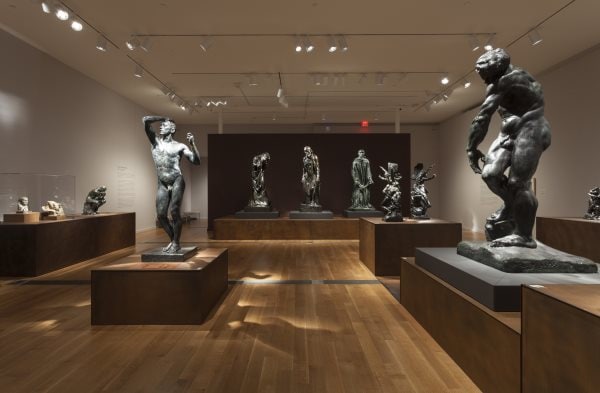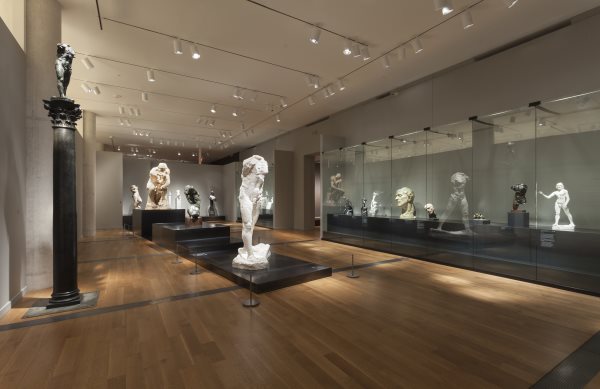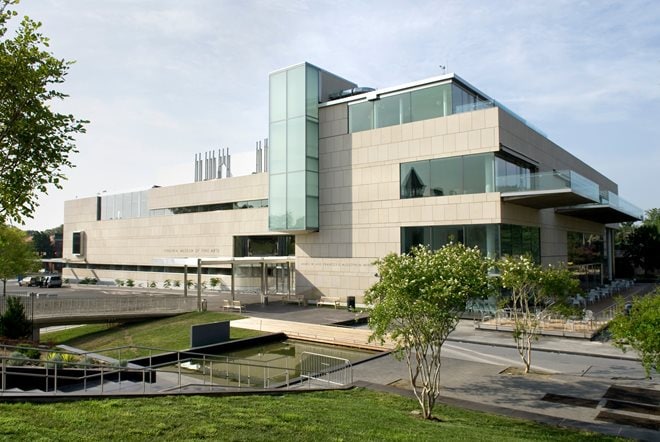Staging an art exhibit is a major production involving a cast of dozens and a budget that can reach millions. As one museum executive has found, having a long-term view of the budgeting process helps to keep those costs down.
At the Virginia Museum of Fine Arts (VMFA) in Richmond, large-scale, special exhibits are held in a lower-level gallery space covering just under 13,000 square feet. It takes 30 to 40 staff members, working with a host of outside vendors, to plan, curate and launch each show.
One of the museum's most popular recent events was the show featuring works by the late 19th and early 20th century French sculptor Auguste Rodin that debuted in November 2015. Nearly 200 pieces filled eight galleries, including a plaster version of the sculptor's famed “The Thinker” that is nearly four-times the size of the original piece in Paris.
VMFA brought in the Rodin exhibit from the Montreal Museum of Fine Arts to fill a spot in its schedule when plans to acquire a portion of another exhibition fell through.
“Montreal had packaged this show, but there was still a lot of work to be done,” says Courtney Freeman, the museum's director of exhibition planning. “Our designer had to work with their designer in order to make sure the plans fit exactly into our space—making sure the crowd flow was correct, making sure all of our architectural elements were accounted for.”
Long-Term Planning is Key to Cost-Efficiency

Rodin exhibit photo credits: David Stover & Jaclyn Brown /Virginia Museum of Fine Arts. Copyright, Virginia Museum of Fine Arts
Design costs are one of the priciest items on any art show budget, Freeman says, especially if casework or new walls have to be built to accommodate the exhibit. Other major expenses can include shipping costs, marketing and loan fees to other museums. Add in things like catalog publishing, courier fees and registration costs, and Freeman says: “Many of these can be upwards of a million dollars to put on.”
Long-term planning is key to cost-efficiency and avoiding a lot of last-minute purchases. In some cases, the staff has to work quickly to pull a show together, but Freeman says the goal is to build more planning time into the exhibit schedule.
“We are striving to get to that three- or four-year planning model, where everyone has enough breathing space to coordinate and plan and to really sink their teeth into it and enjoy the process,” she says.
Instead of getting separate bids on individual components for an exhibit, for example, the museum now bids out single contracts for the entire package at the beginning of the project.
“By being proactive with the curator and designer, we can present a design and prepare a graphics package well in advance of when we need it,” Freeman says. “We have found that our savings could be as high as 50% when using this model.”
Planning for the Unexpected

Rodin exhibit photo credits: David Stover & Jaclyn Brown /Virginia Museum of Fine Arts. Copyright, Virginia Museum of Fine Arts
The museum staff has to stay ready to deal with the unexpected.
“Things always tend to pop up; so we always have a little bit of a contingency in our budgets,” Freeman says.
When some pedestals made of hot-rolled steel arrived from Montreal for the Rodin sculptures, they were bent at the wrong angles. The pieces had to be taken to a local metal shop to fix the problem. For all of the pressure and stress involved in creating a museum exhibit, Freeman says the end result is exciting.
“When you're in the galleries and you're installing during the last couple of days, you see how beautifully everything has turned out,” she says.
There's one more thing that always makes the experience gratifying for Freeman: “Being on time and on budget also helps. That makes me proud.”
See how PEX automatically controls budgets, tracks spending and time-consuming reconciliations.

Sonya Stinson is a professional writer based in New Orleans. Her business content writing and reporting has appeared in Forbes.com, Bankrate.com, Entrepreneur and a host of custom, trade and association publications. She is a graduate of the University of Notre Dame and the University of Missouri-Columbia School of Journalism.
Stay up to date on the latest PEX news!
Thank you, you're now subscribed!
Opinions, advice, services, or other information or content expressed or contributed here by customers, users, or others, are those of the respective author(s) or contributor(s) and do not necessarily state or reflect those of The Bancorp Bank, N.A. (“Bank”). Bank is not responsible for the accuracy of any content provided by author(s) or contributor(s).




